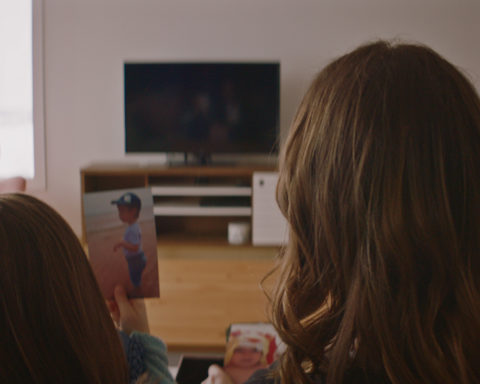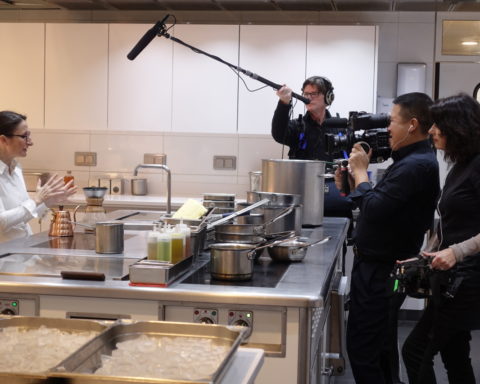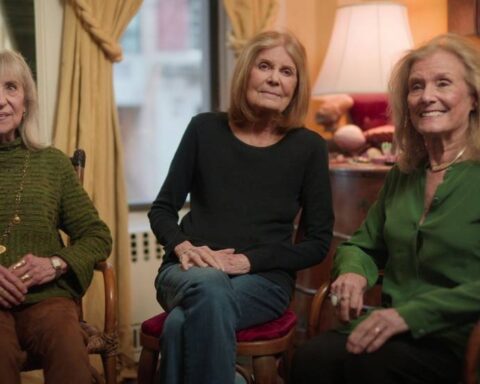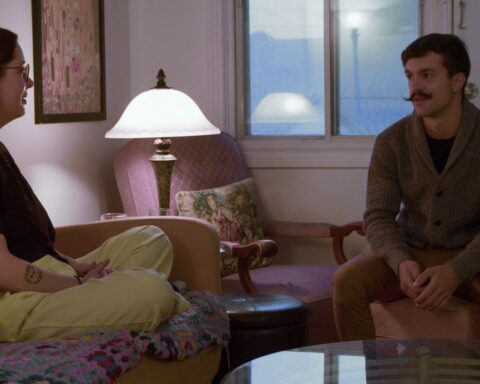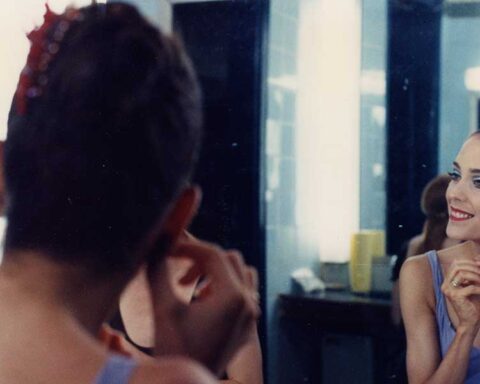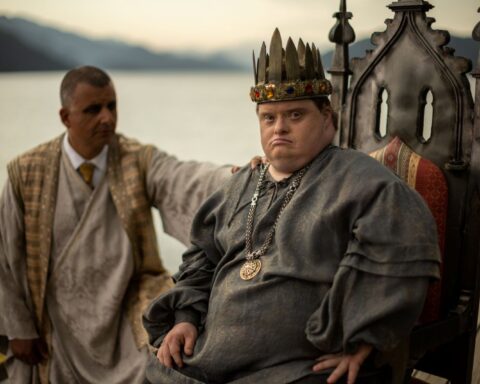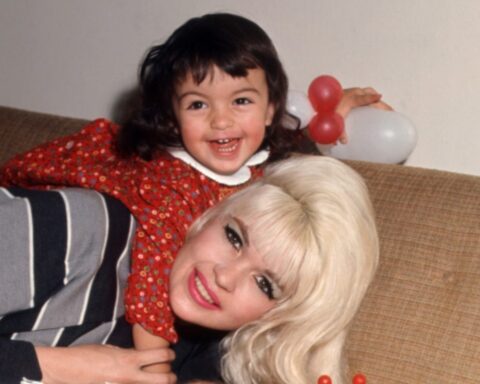“Imagine you’re a Roman Centurion.” Bare legged, draughty uniform, stationed in the damp northern colony of Britain surround by hostile natives—but enough about my school days. Although, that really was my first History homework essay and whilst it could have had the makings of a ripping yarn, it proved the basis for my first school detention instead.
As the only Asian girl in my school year, how the hell was I supposed to imagine myself as a Roman Centurion? History at school was very much a Boy’s Own adventure. When the agenda deemed it necessary to be female-orientated, it focused on the hearth and the intricacies of how to make a coiled pot. It was my protest that resulted in the half-hour solo detention.
Fast forward to 2004. The setting: the Sutton Place Hotel and the World Congress of History Producers. The session’s title: “Desperately Seeking Women.” The purpose: “to debate how can we take the HIS out of History and close the gender gap”—a reaction to the unabashed rejection of women by History Channel at the 2003 Congress. The male-female (M-F) audience split for history programming is 70-30.
So how does a pub-caster like PBS try to attract more women to History? Jody Sheff from WNET found the “Living History” program genre works for them. It’s a program genre that includes “Pioneer Quest” and “the House” series —1900 House, Regency House, Manor House (or Edwardian Country House) and Colonial House and blends reality television with social history. Take a cast of type A’s, seal them into a historic house with itchy clothing, take away the usual comforts and make them live “as if” in Victorian/Edwardian/Regency/Colonial times.
PBS’s Manor House ratings resulted in a 50-40 Female-Male split (10% unaccounted) for the program with the audience share staying at a healthy 5% rating. But is this really where female friendly programming in History should go? It seems we’re back to the hearth again. The main lessons demonstrated by these TV programs seem to be that, in history, life was hard, class was everything, and the evenings were dark. At least some of the women in the Manor House series came across as somewhat empowered; two of the scullery maids and the spinster sister quit under the restrictive conditions of the situation. (Probably watching the crew eat all the craft whilst you had to fashion your own tampons).
One of the challenges of creating history programming for females is coming up with stories that don’t paint women as victims but make them heroes. Is it really the case that, post-Charlemagne, the female has been second-class and their stories lost to time? Or is it that their stories aren’t worth telling? Sheff’s fellow panelist, US director/producer/ writer Lyn Goldfarb evidenced concern that “History” is defined by categories of great men, leaving women out of time. What makes a hero? A glance at the fare delivered by the prime time schedule, makes it seem that heroism is attained exclusively during combat, preferably with sound effects and CGI.
Goldfarb’s suggestion and solution is to include a female story wherever possible in the milieu of a larger story. Her series The Roman Empire in the First Century included a heroic freed female slave in its story of the plot to assassinate Nero. Similarly in her series recreating Medieval Japan, the humiliating experience of being a woman at a town border crossing is dramatically recounted at length. Goldfarb is blunt about her goal to make sure women are incorporated into history; her concern goes beyond TV ratings. It’s a noble stance, even if it does smack of 1980s feminism, but it had me worried that we were going back to those coiled pot lessons and how to make your own tampon.
War stories and combat heroes are subjects that can interest women. Another panelist, John Farron from BBC2’s Friday night prime time history strand Timewatch, suggested a way to make them more female friendly. A traditional Timewatch war documentary brings in 8% share of 1.96m viewers with a 56-44 M-F split. But one war doc outdid the numbers, bringing in 13% share with 3.3m viewers and a 50-50 M-F split. The Mystery of the Missing Ace was the winner and the key to its success was having, in the opening scenes, a “mystery,” a love story and a veritable babe magnet playing the role of Adrian Warburton, The Missing Ace. And why wouldn’t you want to stick around and find out what happened to this rather attractive young man?
Over at History Television, Cindy Witten’s analysis is that you draw a female audience with good drama. “Women tend to be more (the) main consumers of prime time conventional drama. Take the best dramatic elements of a story and apply them to documentary.” History Television’s numbers and skew have shifted in the past few seasons: it still has its loyal core male audience, but at prime-time they’re now at a 60-40 Male-Female (M-F) split and their average audience over 18 is 78,000. The programs that bring in the larger numbers and more balanced M-F are those that look like primetime drama and really play on the dramatic elements of the story. Colour is a big factor too. “The Colour of War” drew in both a new younger audience and more women.
It’s also no coincidence that History Television’s primetime has attracted more of a gender balance with the addition of _JAG_ into its 7pm slot. Good-looking male and female characters in heroic roles fighting for justice. Hey, the lead’s even Canadian!
Historia (Quebec) bears out Witten’s and Farron’s observations. Their M-F split runs at a healthy 54-45, probably from the 8pm primetime JAG followed by a nightly film strand at 9pm.
Marc Etkind from History Channel wasn’t present at the “Desperately Seeking Women” session. At last year’s Congress, he was unapologetic for History Channel’s male bias. They had trouble attracting a female audience and since their male viewership served them so well, why bother?
And indeed—why bother? Does commercial History television need women? For the public broadcasters like PBS and BBC, their mandate is to serve a general audience. For the private broadcasters, isn’t it always about something else than making the world an equal place?
“Advertising on History Television has changed subtly,” says Doug Davis, Director of Research and Inventory Management, at Alliance Atlantis. Three years ago, the auto ads were targeting 50% adult audience, 50% specifically male audience. Today, the balance is 70% general adult and 30% male. Watching History Television during primetime, the commercials range from the traditional automobile, power tools and renovation advertising to Swiffer cleaning equipment and Clairol hair colour. Even on “Zero Hour,” a one-hour documentary on the meltdown at Chernobyl, there was Queen Latifah showing us how to have longer-lasting lipstick! And the roles of the woman in advertising are generally portrayed as liberated, sexy, and in charge, whilst the male role remains the “normal guy” usually with his girlfriend/wife.
So in terms of the fight for feminism, if the commercial world has already recognized the power and role of the female audience, then as Cindy Witten declared, “It does seem curious to have this discussion at this point in the new century.” Perhaps the discussion on “Desperately Seeking Women” is itself an anachronism and, in a paradoxical way, well suited to a Congress on History. Maybe that school history essay should have been called “Imagine if you HAD a Roman Centurion.” I feel another detention coming on.




